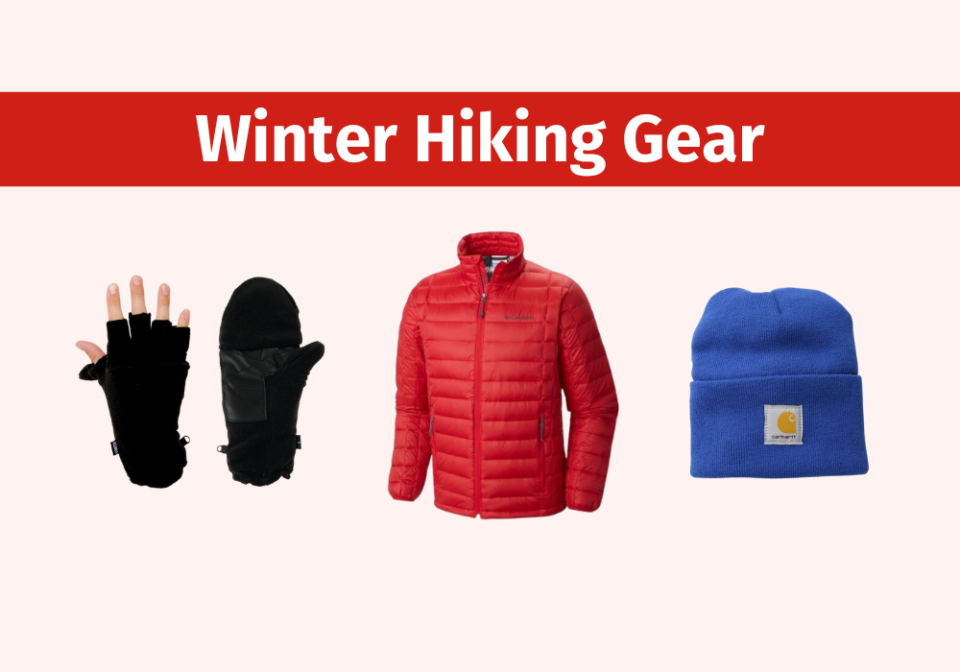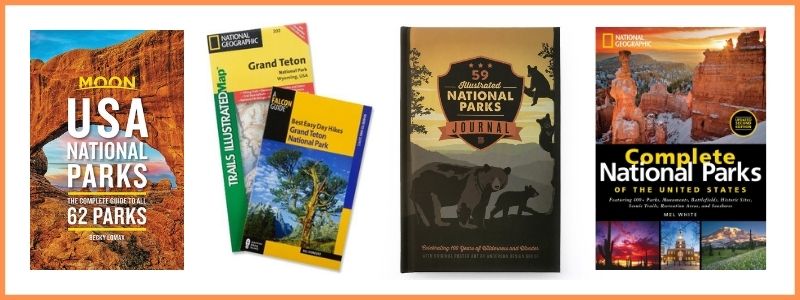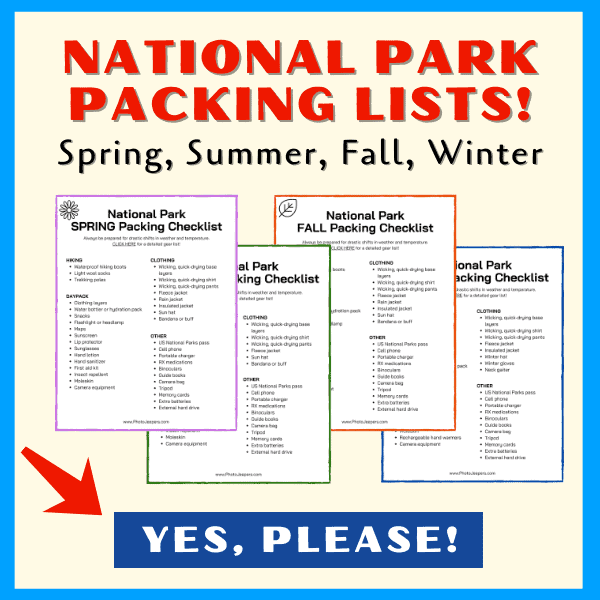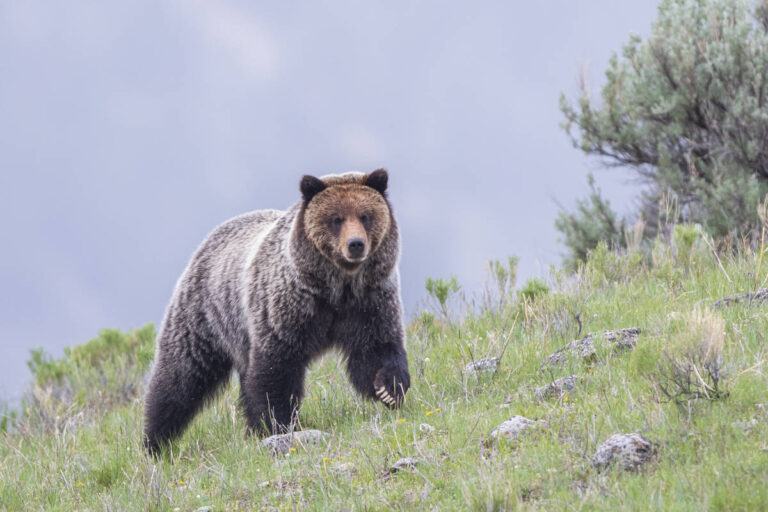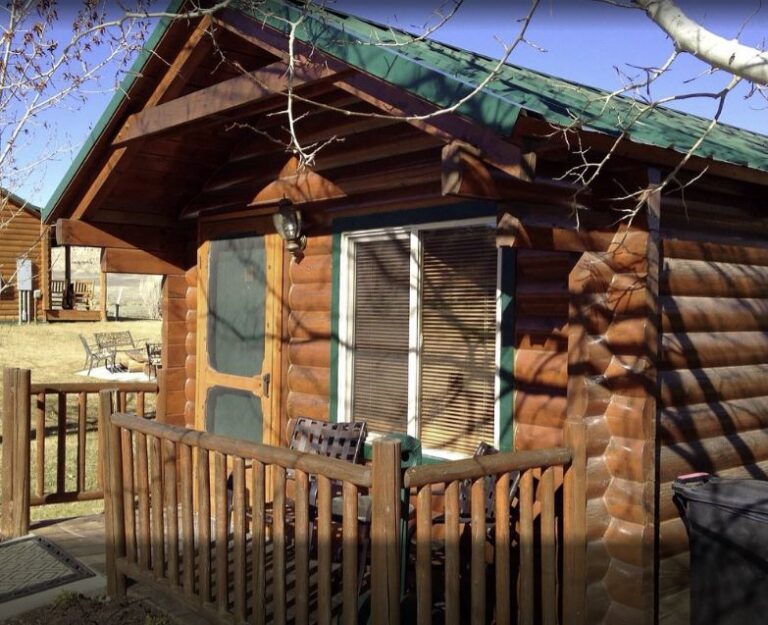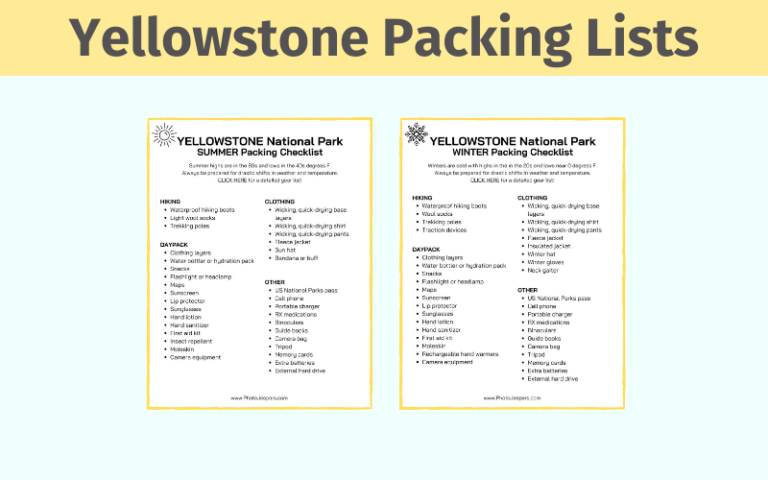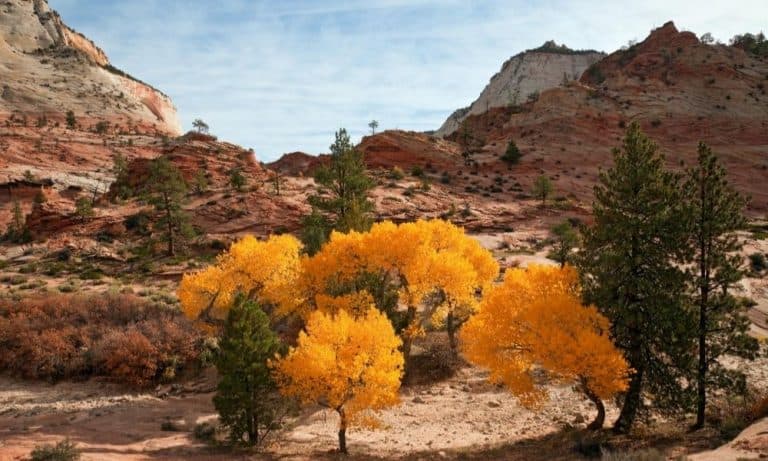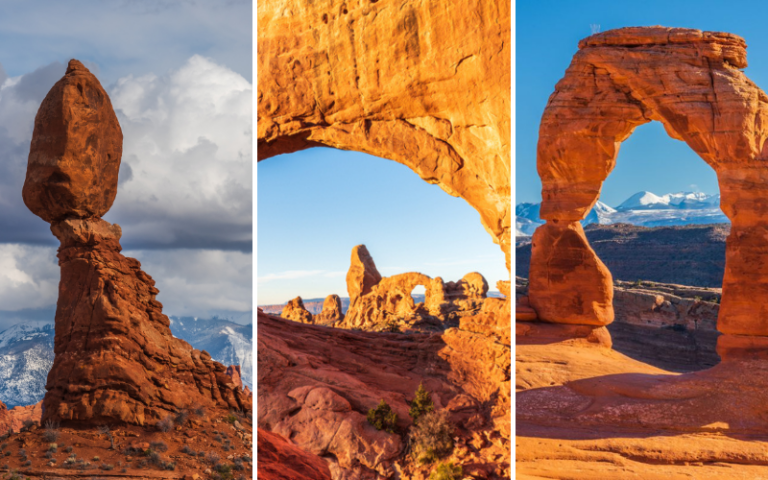Best Winter Hikes at US National Parks
Believe it or not, winter is a terrific time to explore the beauty of America’s National Parks. You’ll find some of the best winter hikes at US national parks are in southern states when it’s not so hot. And other hikes in northern states where you can enjoy snowshoeing!
For more information about the best hikes at US National Parks this winter, check out our list below that includes trail difficulty, distance, time needed, and what to expect when hiking this time of year.
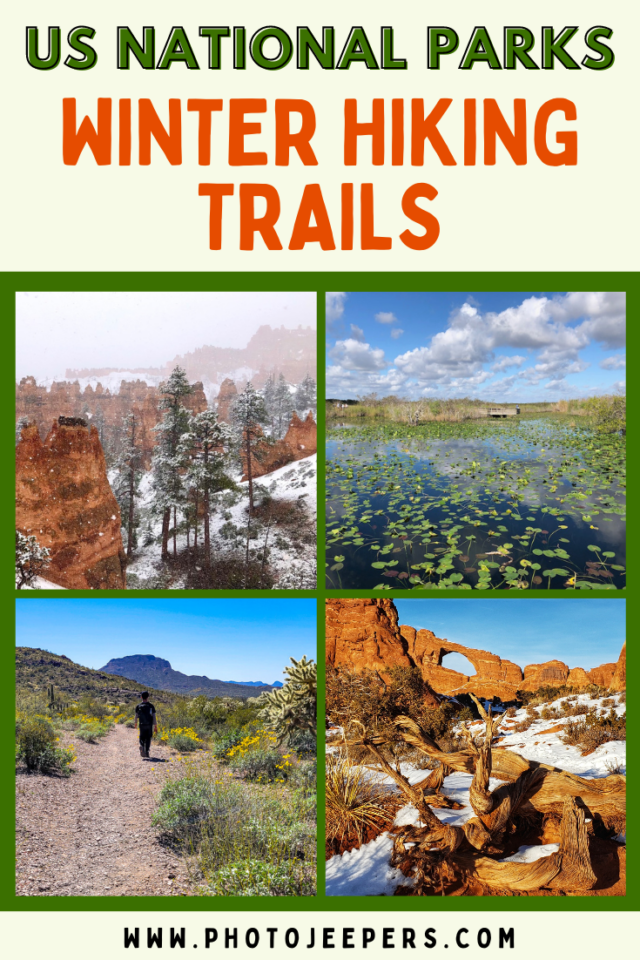
We live close to many National Parks in the Southwest USA and actually prefer hiking in the winter to avoid the crowds and heat of summer. As long as you’ve got the right clothing and hiking gear, you’ll find winter hiking isn’t so bad!
With the help of our hiking friends, we’ve put together a list of hiking trails we recommend you explore in the winter at US National Parks. Plus check out the winter gear we use when hiking!
For even more hiking ideas, we’ve got a list of 60+ Hiking Trails in the US, plus a free printable list of best hiking trails in all 50 states with 5 best hikes per state. Grab your copy by clicking the graphic below!
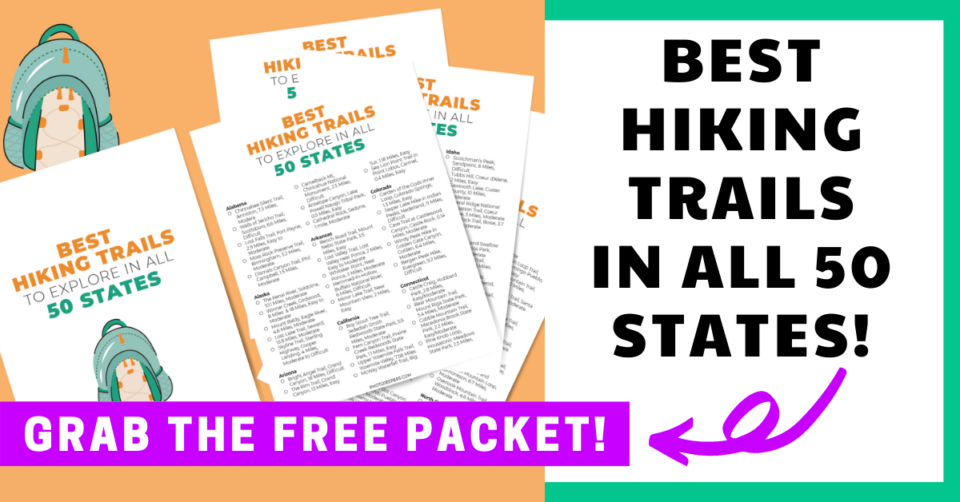
This site contains affiliate links which means WE may receive commissions for purchases made through these links. We only provide links to products we actually use and/or wholeheartedly recommend! As an Amazon Associate, we earn from qualifying purchases. Read the full Disclosure Policy.
Tips for Winter Hiking at US National Parks
Hiking is one of the best winter activities when visiting US National Parks in the winter. Check with the Visitor Center about trail conditions and whether traction devices are recommended before setting out on any trail!
Winter Clothing for Hiking
Many US National Parks in the winter experience cold temperatures and winter weather. Be sure to wear and pack winter clothing essentials for these parks.
- Base Layers: Wicking base layers will give you the warmth you need to fight off the cold winter weather. Plus, you can take them off easily whenever you no longer need them.
- Fleece jackets: Fleece jackets serve as a light layer on warmer days in the park but can also add warmth to your layering.
- Insulated Jackets: Insulated jackets provide the perfect warmth whether you are going for a light hike or a more extended excursion.
- Wool socks: Do not wear cotton socks. It is best to wear wool socks for winter. Bring a spare just in case anything unexpected happens.
- Insulated hats: An insulated hat will protect you from losing too much of your body temperature through your head.
- Winter gloves: If it’s extremely cold, use an insulating glove inside a waterproof shell mitt to provide dexterity and warmth.
- Waterproof hiking boots: Hiking boots need to be waterproof. You may also need traction devices for some trails.
Winter Hiking Gear
Here’s the winter hiking gear we recommend for hiking at National Parks:
- Water: At least two liters of water for day hiking is recommended. Use a wide-mouth Nalgene water bottle since the narrow-mouth are prone to freeze shut more easily. A Neoprene bottle sleeve also works.
- First aid kit: No matter whether your hike is long or short, always pack a hiking first aid kit. Make sure your first aid kit has the essentials like plasters, bandages, anti-bacterial wipes, etc. Other items to pack for a winter day hike are a hiking lighter and a PLASTIC whistle.
- Headlamps: Carry a headlamp for winter hiking because there are fewer hours of daylight. Use lithium batteries for all electronic devices since they are resistant to cold temperatures.
- Snacks: Snacks for hiking are essential. Choose the ones that are easy to munch, so you can grab them to refuel your energy.
Best Winter Hikes at US National Parks
During each season and month of the year, national parks will have different hiking (and snowshoeing) opportunities! Check out our guide for finding the best National Parks to visit by month.
Thank you to our hiking friends for sharing their favorite winter hikes at US National Parks!
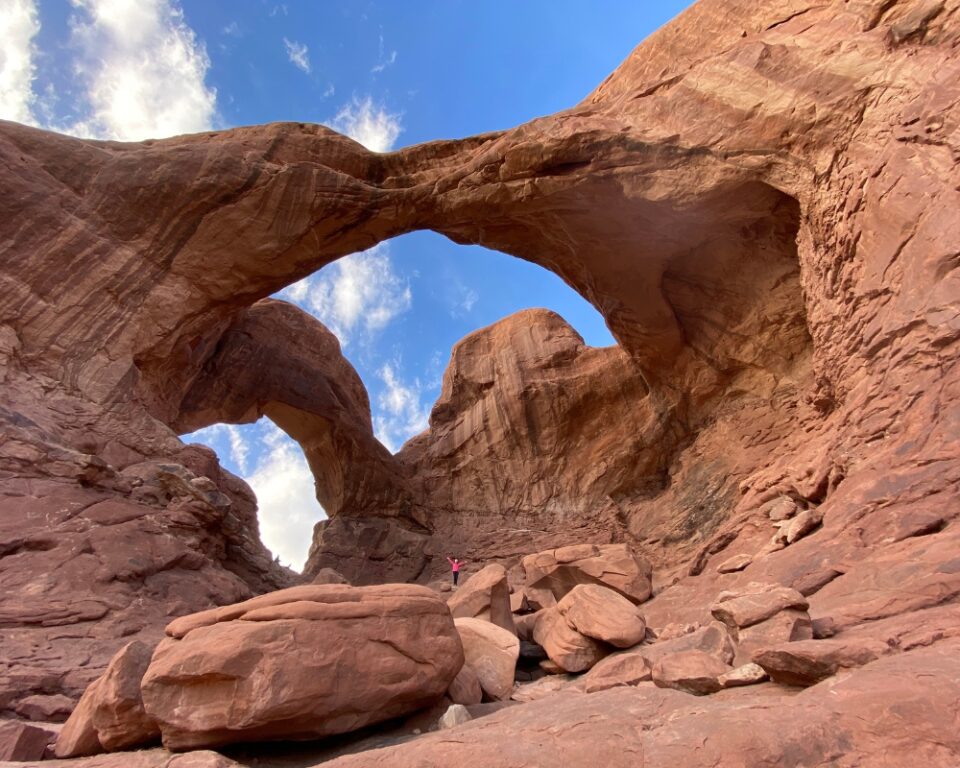
Arches Winter Hike
Double Arch is a beautiful hiking trail in Arches National Park. It is relatively short at only 0.6 miles out & back, with very minimal elevation gain. This is one of the most popular hikes in Southern Utah, so it can often be busy and crowded.
Because of this, we’ve found that winter is an ideal time to visit and enjoy this beautiful hike. Another benefit to Arches National Park winter hiking is that a timed entry pass is not required like in the summer months. You won’t need a permit for this hike, so advanced planning is not required.
Although it can snow here, it’s usually a small amount, and most trails remain easily passable. However, if you are concerned, you could always wear crampons just to be safe. During the summer, this hike is quite sandy, so having a bit of compact snow on the ground makes it easier to hike. Recommended by Janae, Adventures With TuckNae
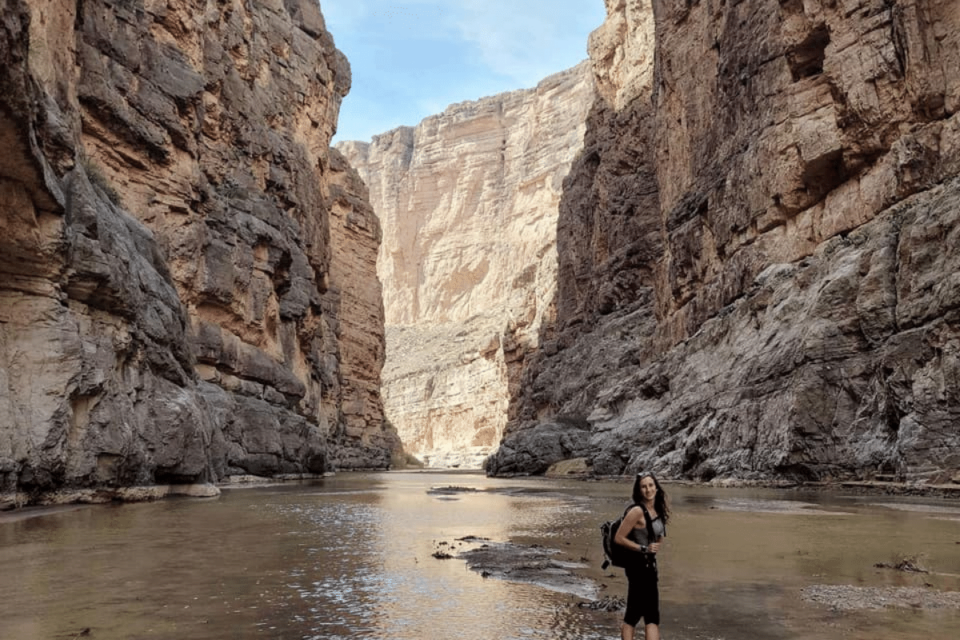
Big Bend Winter Hike
Hiking the Santa Elena Canyon Trail in Big Bend National Park is a truly breathtaking experience. The trail itself is pretty short and easy at just 1.6 miles round trip and should only take about 1-2 hours to complete.
However, you’ll likely find yourself hanging around much longer to marvel at the towering canyon walls and the beautiful Rio Grande. If you have more time, you can even paddle down the river!
Big Bend is located in West Texas and it’s no secret that Texas experiences some hot weather. With this being said, winter is an ideal season to tackle this trail. The cooler temperatures provide more pleasant hiking conditions compared to the scorching heat of summer.
Plan your trip during the beginning or end of the winter months to experience the best temperatures! Recommended by Jordan, The Homebody Tourist
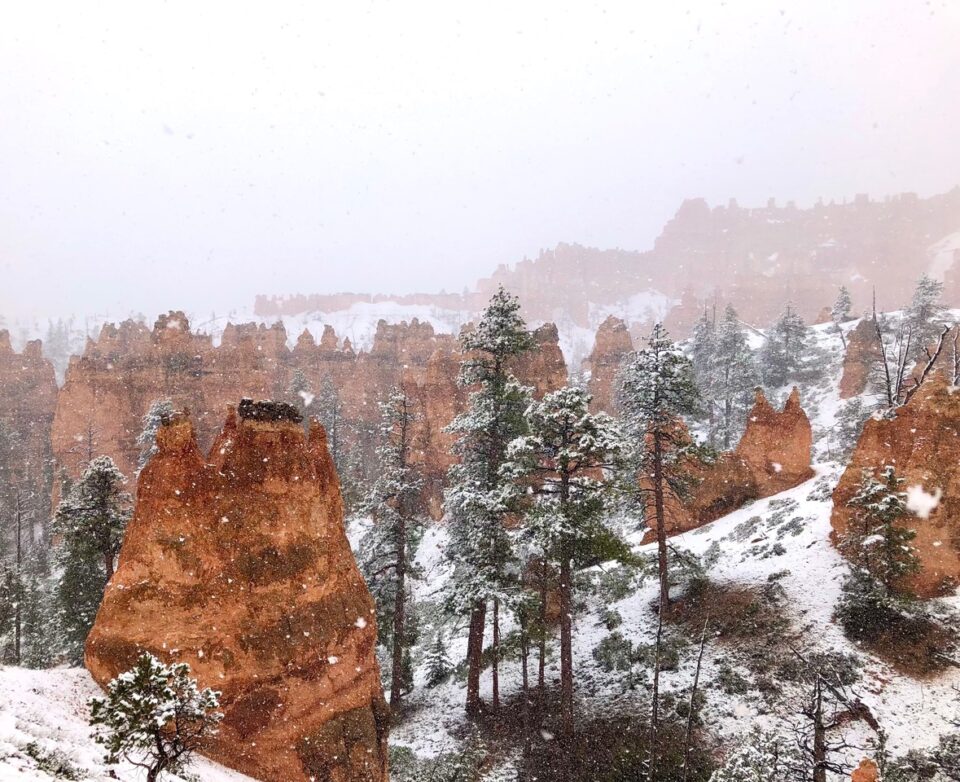
Bryce Canyon Winter Hike
The Queens Garden trail in Bryce Canyon National Park is one of the most popular hikes in the park. However, if you want to avoid the crowds, do this amazing canyon adventure in the winter. Snow coating the hoodoos and the sculpted windows makes a magical scene.
Queens Garden is the least strenuous of the hikes descending into the canyon, so it’s perfect to do in winter. You can do a 2.9 mile loop by dropping down the Queens Garden trail and ascending the switchbacks of the Navajo loop trail. The hike starts at Sunrise Point and ends at Sunset Point with a pretty stroll along the rim to get back to the trailhead.
Waterproof hiking boots are a must for Bryce Canyon winter hikes. In addition, the packed trail is likely to be icy so microspikes or Yaktrax for traction are recommended. Being well equipped will allow you to safely enjoy the winter wonderland that beckons in Bryce Canyon. Recommended by Karen, Outdoor Adventure Sampler
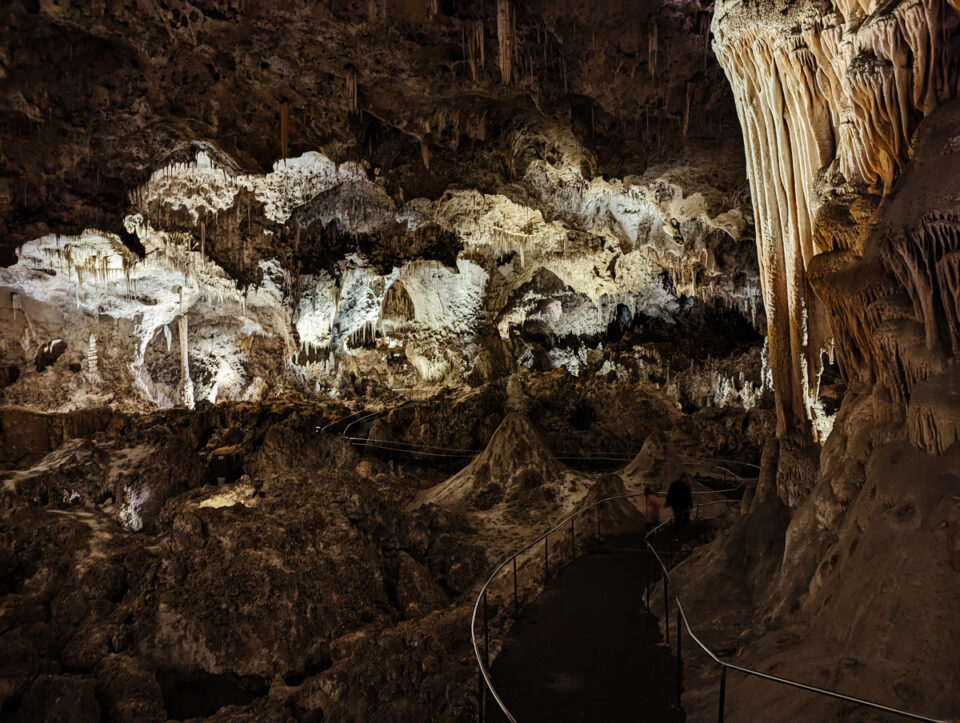
Carlsbad Caverns Winter Hike
US National Parks are popular destinations to visit during the summer, but many are unaware of the joy they provide throughout the winter months as well.
Taking a hike in a national park during the winter is oftentimes an entirely different experience than the same journey during the summer. The Natural Entrance Trail to Carlsbad Caverns is a great example.
There are so many amazing things to do in Carlsbad Caverns, but hiking the Natural Entrance to Carlsbad Caverns during the winter is one of the best highlights of the entire park!
The trail begins at the park’s visitors center, with a 1.5-mile hike downhill. It is steep and features switchbacks until you reach the cave’s entrance. This is a unique and interesting trail, but it is quite strenuous and typically takes hikers 60-90 minutes to complete.
At Carlsbad Caverns in the winter the outdoor temperatures may be cold, but the cavern is always 56°F. That said, a long-sleeved shirt or light jacket will be preferable to a winter coat. Recommended by Candice, GS Ginger
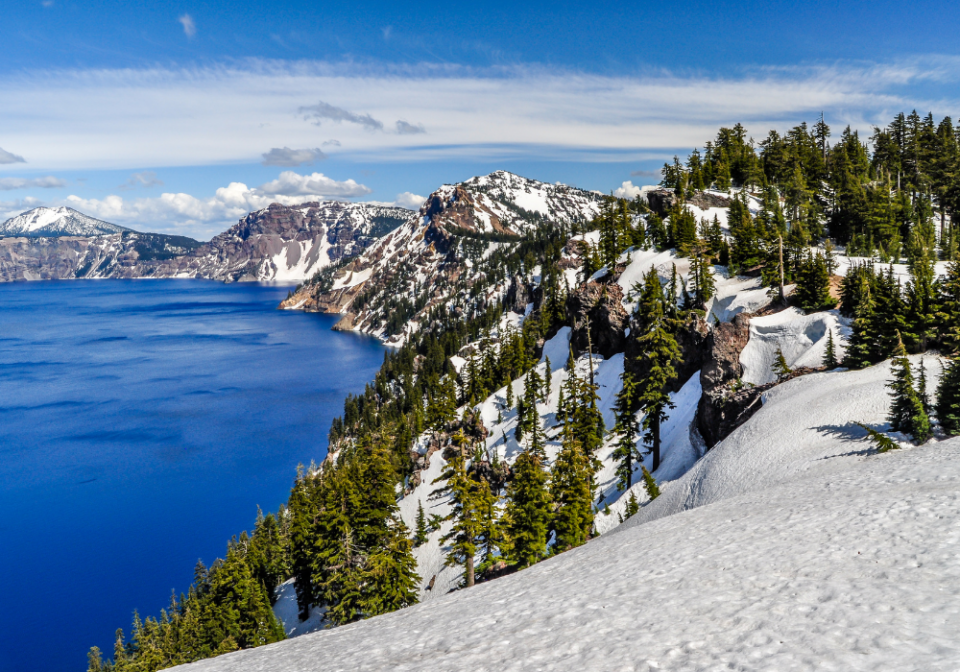
Crater Lake Winter Hikes
For a snowy, breathtaking winter hike, head to Crater Lake National Park in Oregon. Crater Lake often has average snow depths of 8 to 16 feet, from November through March each year. While many of the roads and trails in the park are closed, the park itself, and some winter trails remain open.
One of the most popular, but most challenging winter routes in Crater Lake is the Mazama Village to Rim Village trail at Crater Lake is an 8.5 mile loop that follows the famous Pacific Crest Trail. The views are mostly forestry, with some glimpses of the beautiful surrounding landscape of Crater Lake. Due to the length of the Mazama Village Trail and the time it takes to complete (over 4 hours) it is likely best suited to adults with a decent fitness level.
Some shorter winter hikes in Crater Lake in the wintertime to consider are Discovery Point Trail (2.1 miles) or the Garfield Peak Trail (3.4 miles.) If you’re looking for some extra easy hikes to do at in the park with kids, then try the Godfrey Glen (1.1 miles) or the extra short 0.8-mile Sun Notch trail, both of which are open in the wintertime.
Due to the deep snow, it’s recommended you use snowshoes for your winter hike in Crater Lake. Contact the park for details about renting snowshoes. The Rim Village Visitor Center is closed during the winter, but the Steel Visitor Center is open daily throughout the winter. Recommended by Kristin, Tiny Footsteps Travel
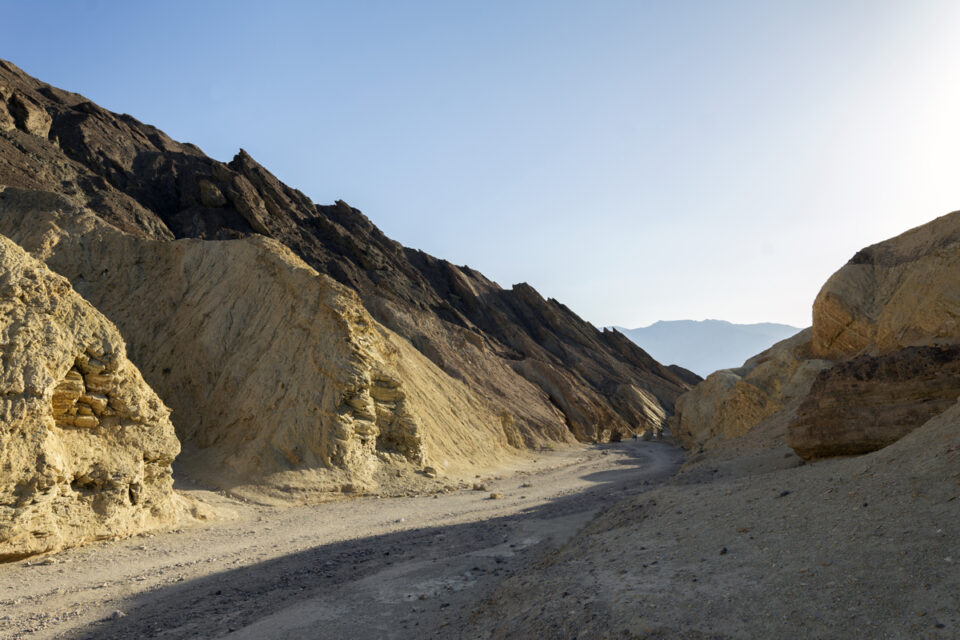
Death Valley Winter Hike
Death Valley National Park in California is known for being the hottest, lowest, and driest point in the USA. Temperatures in the park regularly reach record highs, which means that winter is the best time of year for hiking Death Valley trails. In the spring and summer, temperatures are so high, it can be dangerous to spend long periods of time outside in the park.
The Golden Canyon trail in Death Valley is a 4.3 mile loop hike. It’s an easy to moderate trail that takes an average of 2-3 hours to complete, depending on how often you stop. The trail starts by taking you through a beautiful canyon, Golden Canyon, and then onward to natural landmarks including Red Cathedral, Manly Beacon, and Gower Gulch.
Even when hiking the Golden Canyon in winter, it’s important to bring lots of water, wear good footwear and a hat, protect your skin with sunscreen, and watch yourself and others for signs of overheating. It’s best to hike first thing in the morning, when the sun isn’t directly overhead.
To access this trail, you will need to purchase a permit for Death Valley National Park. Fees are structured by person, or by vehicle. So if you arrive in a car, you’ll pay a flat fee for that car. You can buy your permit in advance online, or, when you arrive in the park, stop by Furnace Creek Visitor Center or Stovepipe Wells Ranger Station to purchase your permit. You also have the option to buy a permit at one of the park’s fee machines, which are placed throughout the park and operate 24/7. Recommended by Erin, Pina Travels
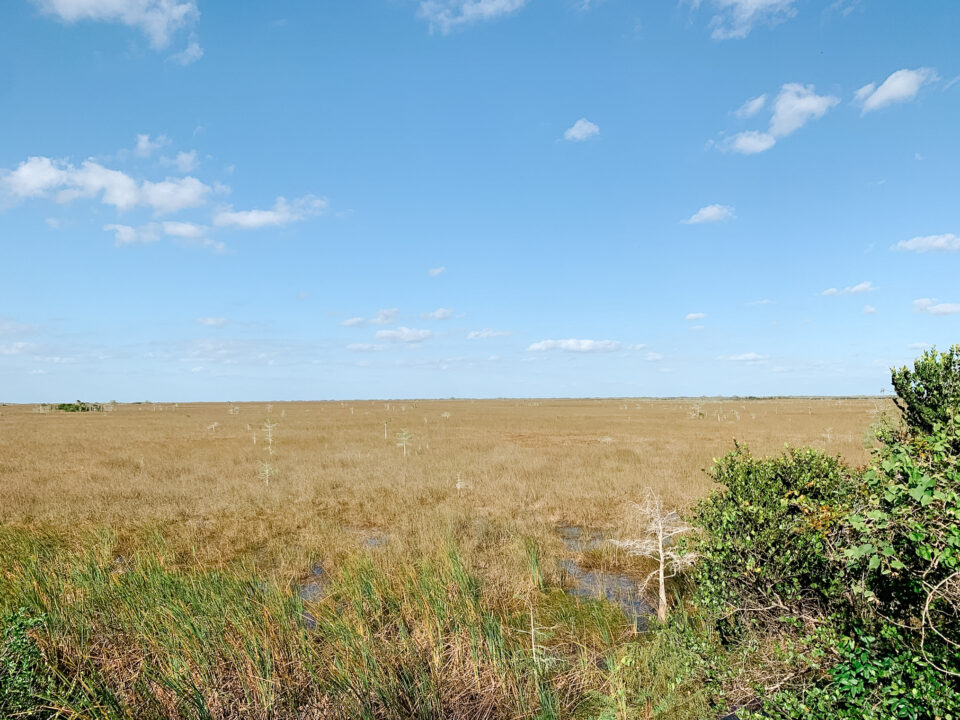
Everglades Winter Hikes
The Everglades is one of the most impressive national parks in Florida. Hiking during the winter months doesn’t get any better than the Shark Valley Tram Trail in this park.
Shark Valley Tram Trail in the Everglades is an easy but lengthy loop trail that can be enjoyed in a variety of ways. At 14.7 miles and only an elevation gain of 26 feet, it’s more of a walk than a hike, but many visitors enjoy this route for running and biking as well. This is a popular trail, so plan to arrive early if you’re hoping to bypass crowds.
This is a beautiful trail near Homestead, FL, and typically takes people a little over 4 hours to complete the full loop. Conditions will be dry during the winter, which often makes for better wildlife viewing!
Don’t let the winter blues keep you from exploring! Enjoy the sights and sounds of Everglades National Park on the Shark Valley Tram Trail! Recommended by Candice, Exploring the Gulf
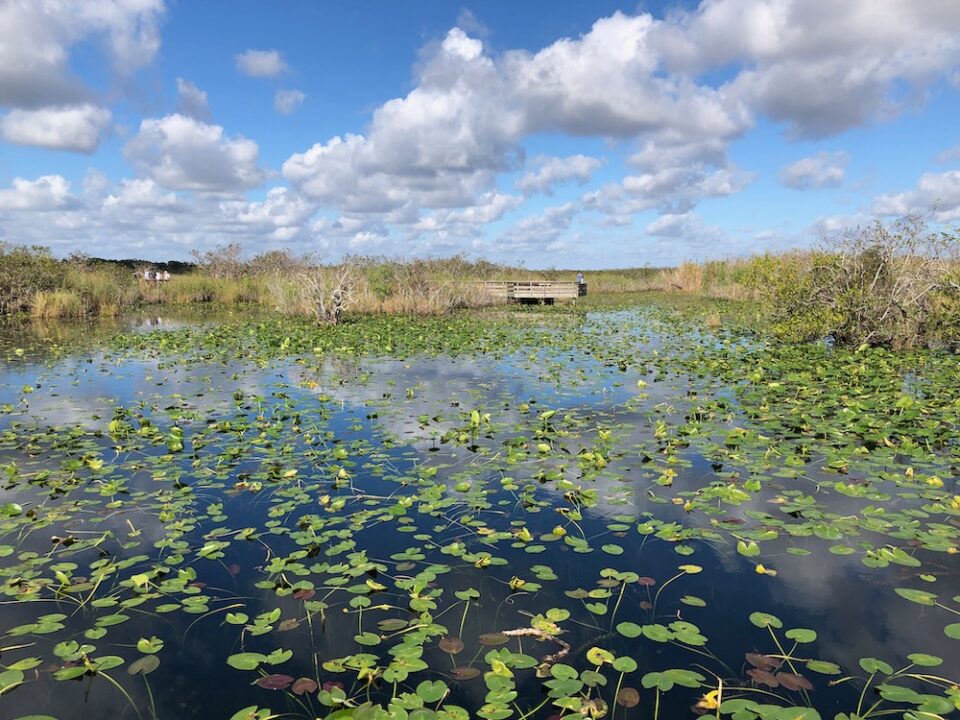
The Anhinga Trail is by far one of the most popular trails in Everglades National Park which is one of the most underrated National Parks on the East Coast. The trail is 0.8-miles and rated easy – it’s even wheelchair accessible – but it is absolutely full of wildlife.
The trail wouldn’t take long at all if you hike right through, maybe 15 – 20 minutes, but you’ll want to stop and watch for birds, turtles, alligators, and more along the way.
Winter is the best time to visit Everglades National Park since it’s at the southern end of Florida. The temperature is much cooler plus it’s considered their dry season. This is also when you’ll see the most wildlife in the park.
However, winter is also when the park will be the most crowded so if you can visit on a weekday or come early on the weekends that would be best. There is an entrance fee to Everglades but if you have an America the Beautiful Pass that covers it.
Vultures are a nuisance at the trailhead and you may want to bring an old blanket to cover your windshield wipers. They’ve been known to damage them. Note that you’ll also need to use the Homestead Entrance Station to access this hike. Recommended by Anna, Stuck On The Go
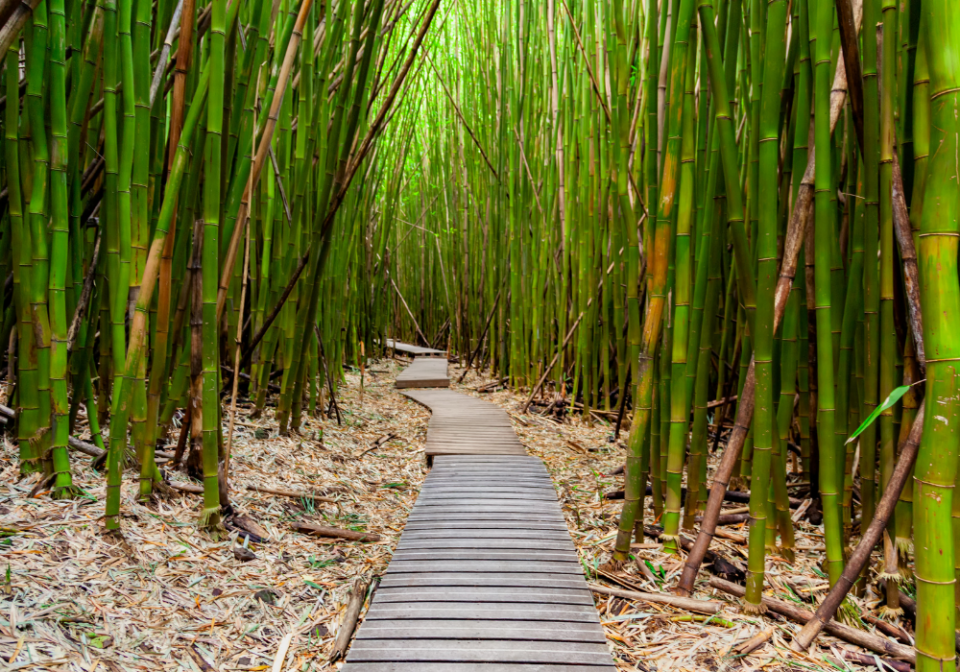
Haleakala Winter Hike
The Pipiwai Trail is a must-hike if you plan to drive the Road to Hana in Maui. Located on the windward shore of Maui in Haleakala National Park, the trail features beautiful waterfalls, and a section of the trail traverses a lovely bamboo forest.
Although it’s likely to be rainier on Maui’s east coast during the winter, the waterfalls at Haleakala National Park will be at their best at this time and the vegetation a lush bright green. Daytime temperatures, in the mid 70s to low 80s, are comfortable for hiking, especially if you start earlier in the day or late in the afternoon.
Be sure to stop to admire the beautiful banyan tree along the trail, one of the largest in Maui, and pause to “hear” the bamboo chime!
Although there is a boardwalk for a part of the distance, expect portions of the trail to be muddy and possibly slippery. Wear good waterproof hiking shoes that you do not mind getting muddy, and bring trekking poles if you like using them. A rain jacket will be helpful as well. Try to schedule your trip to Hana for a drier day within your vacation! Recommended by Sam, Travel Hawaii with Us
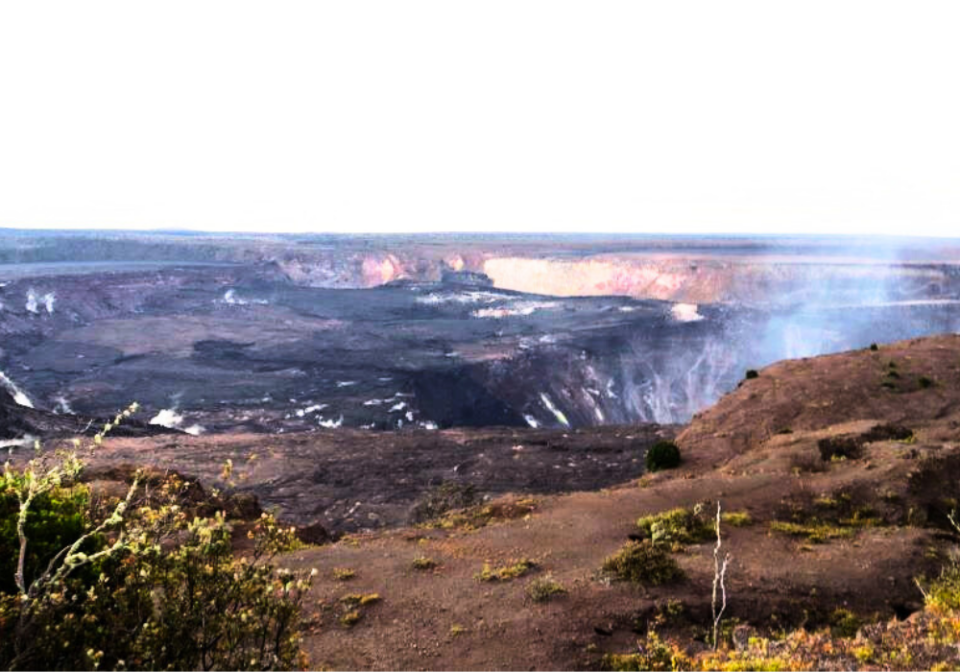
Hawaii Volcanoes Winter Hike
The Crater Rim Trail within Hawaii Volcanoes National Park on the Big Island is a spectacular hike for outdoor enthusiasts in the winter. With its breathtaking views, unique setting, and diverse landscape, it’s no wonder why hiking this trail is considered one of the best things to do on the Big Island.
The weather on the island is perfect for hiking in the winter months, with average highs of 85°F and lows of 70°F.
The trail takes you along the rim of the Kilauea Caldera, offering up-close views of the volcanic landscape, steam vents, lush rainforests, and native plants and wildlife.
Hikers can access the trail from different points along Crater Rim Drive and customize the length of their hike. The entire loop is about 11 miles, but parts of the trail might be closed depending on current volcanic activity.
Most visitors to Hawaii Volcanoes National Park usually access the trail along the backside of the Volcano House, hiking about 2.7 miles to complete the out-and-back route. It takes about 1 hour and 10 minutes to complete.
The trail is considered moderately challenging, with some slippery cliffs and edges. While this trail is not as challenging as other hikes on the island, a good tip is to hike counterclockwise if you prefer easier terrain. Before you start the trail, stop by the visitor center to get the latest information about the trails and volcanic activity.
With an elevation of almost 4,000 feet, remember to bring a jacket as the temperature can get chilly if hiking early morning or evening. Bring plenty of water and snacks to keep you energized, and wear proper hiking shoes. Recommended by Trysta, This Travel Dream
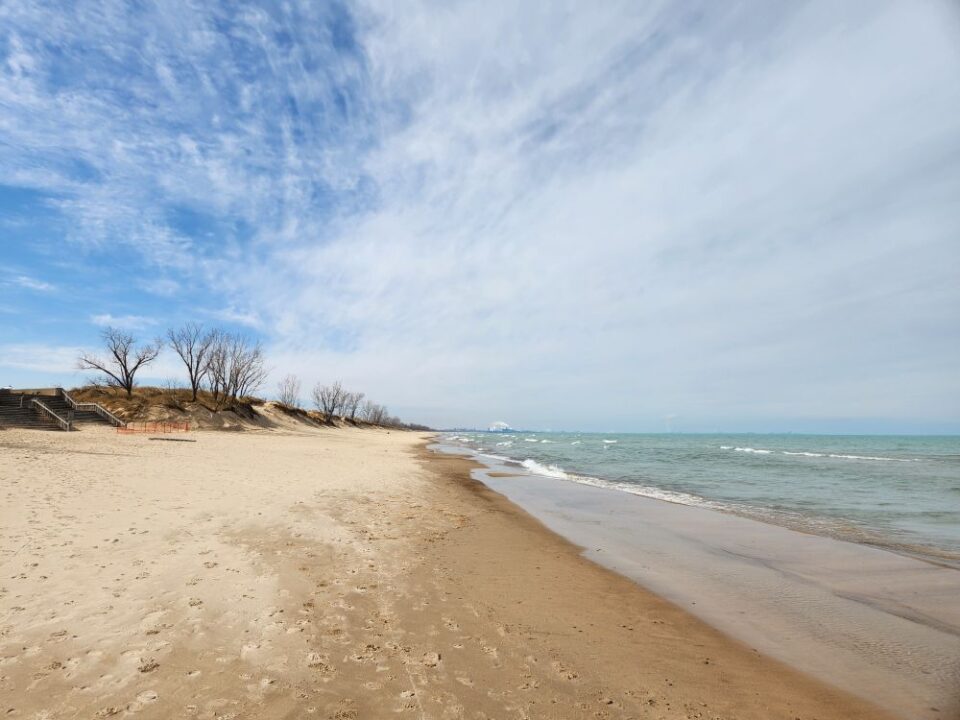
Indiana Dunes Winter Hike
Located along the shores of our Great Lakes, Indiana Dunes National Park is one of the top 10 most visited national parks in the country and for good reason! With its clean, clear waters and beautiful beaches, the park attracts millions of visitors each year who come to enjoy swimming, boating and camping in the summer, and hiking, snow-shoeing and sledding in the winter.
Indiana Dunes comprises four separate ecosystems and is one of the most biologically diverse parks in the country. The park conserves the great sand dunes and hundreds of bird and native plant species. The best way to see the dunes in the winter is by hiking the Dune Succession Trail.
This trail begins right out of the parking area with a steep climb upwards towards a series of boardwalks. Even though the trail is less than one mile, the views are incredible. From the top visitors can see out to Lake Michigan and, on a clear day, all the way to Chicago! It loops around to the shore of the Great Lake, a great place to look for driftwood and spend a while before heading back to the car.
Visiting in the winter is great because there are hardly any crowds, lines, or groups of people. It feels like you have the whole park to yourself. With over 50 miles of trails to explore, hiking is a great way to spend a day in Indiana Dunes. And as a bonus, there is no national park entrance fee in the wintertime! Recommended by Erin, The Simple Salty Life
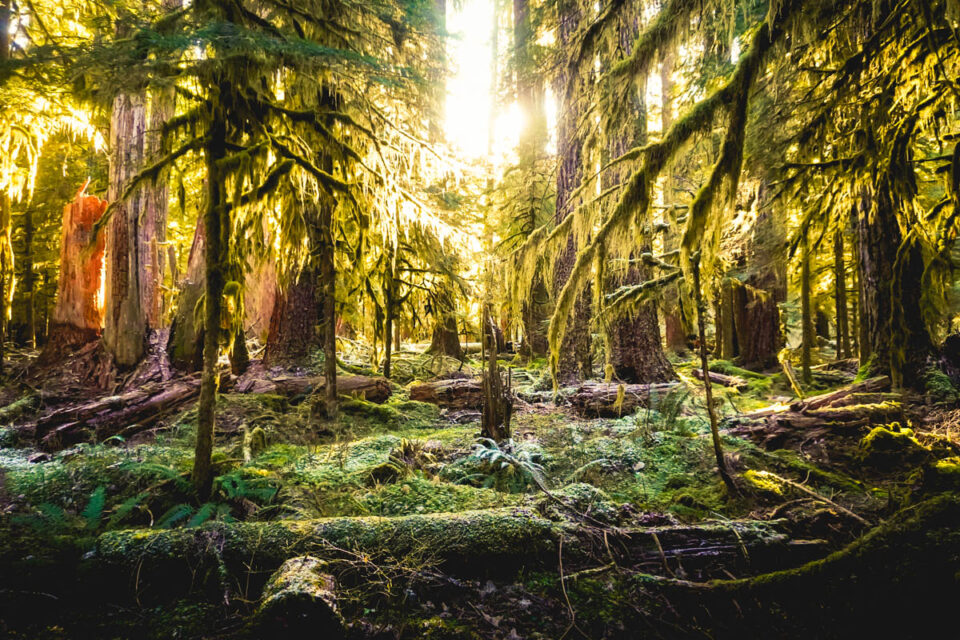
Olympic Winter Hike
The Hall of Mosses trail, located in the Hoh Rainforest in Olympic National Park, is wonderful to hike year round, thanks to its temperate coastal weather.
In the wintertime, the Hoh Rainforest receives quite a bit of rainfall—it is a rainforest, after all! That being said, the moss, hanging from the enormous trees, and primeval ferns look even more luscious than usual during this wet period—so enjoy the views and remember to bring along a raincoat and some waterproof hiking shoes!
This Olympic National Park winter hike is quite easy, clocking in at a mere 1.1 miles, with 78 feet of elevation gain. Nonetheless, it still packs a lot of punch, with a dramatic cathedral of trees, towering overhead; lush greenery around every corner; and even the chance to see wildlife, like elk, in the forest. Recommended by Jessica, Uprooted Traveler
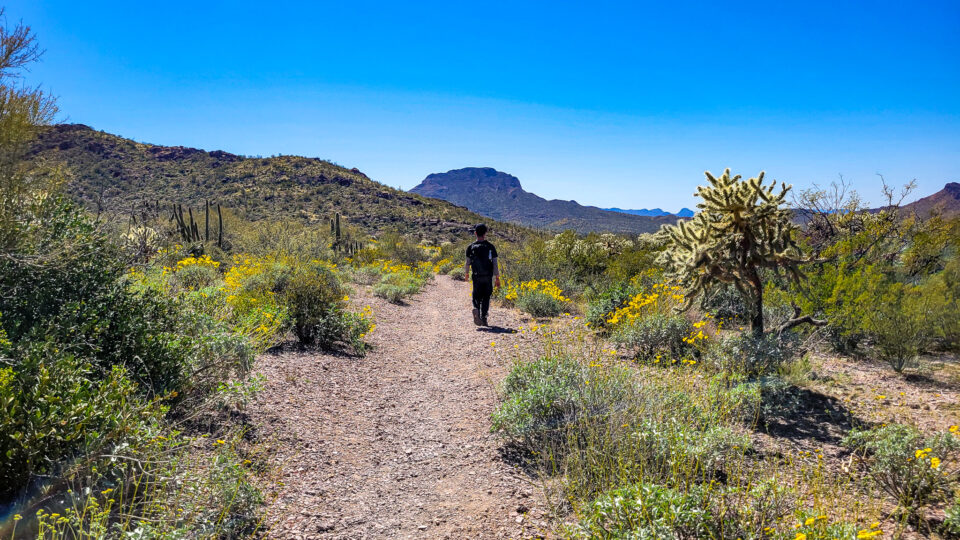
Organ Pipe Cactus National Monument Winter Hikes
Arch Canyon Trail in Southern Arizona’s Organ Pipe Cactus National Monument is a beautiful desert trail perfect for winter hiking! With average daily temperatures slightly below 70°F and lots of sunshine, hiking in Organ Pipe is a wonderful warm winter activity.
The Arch Canyon trail is a short 1.2 mile out and back hike rated as easy by the National Park Service. It takes around 30 minutes to complete. It is a fun and easy trail with beautiful views of Ajo Mountain’s natural arches.
For the more adventurous hikers, there is an unofficial trail that leads up the mountain to the arches. This very steep and strenuous primitive trail is not maintained by the National Park Service. The trailhead is located on Ajo Mountain Drive, a 21- mile road that winds through the beautiful Sonoran Desert.
This one-way drive takes 2-3 hours to complete, which makes a short hike a great way to get out and stretch those legs! For the full Sonoran Desert experience, bring your tent and do some winter camping at the nearby Twin Peaks Campground. Recommended by Yvonne, MPA Project Travels.
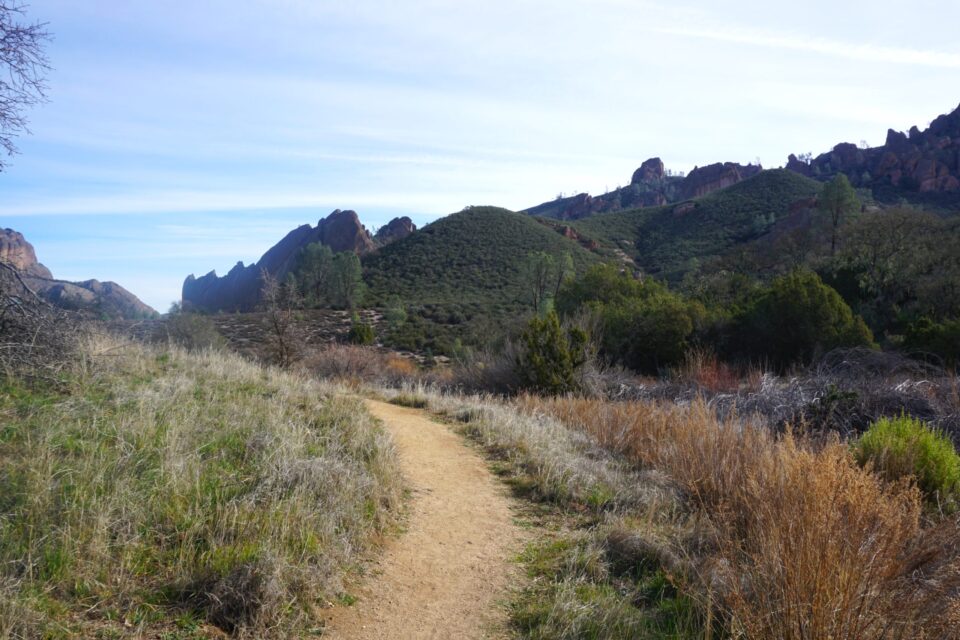
Pinnacles Winter Hike
Jawbone Trail at Pinnacles National Park is generally considered an easy out and back trail with a slight elevation gain of 528 feet. It’s 1.2 miles one way and takes 30 minutes to an hour.
There is not much shade on the trail and winter months at Pinnacles National Park are typically sunny, so plan accordingly. Dogs are not allowed on the trail so leave your furry friends at home for this one!
Pinnacles National Park sees a high temperature of 60 degrees and 30 degrees Fahrenheit in the winter months. Snowfall is low and typically only occurs at high altitudes in the park, so you likely will not encounter any snow on your hike.
This easy trail with minimal elevation gain provides great views of the high peaks, famous at Pinnacles National Park. Recommended by Alyssa, An Apple a Plane
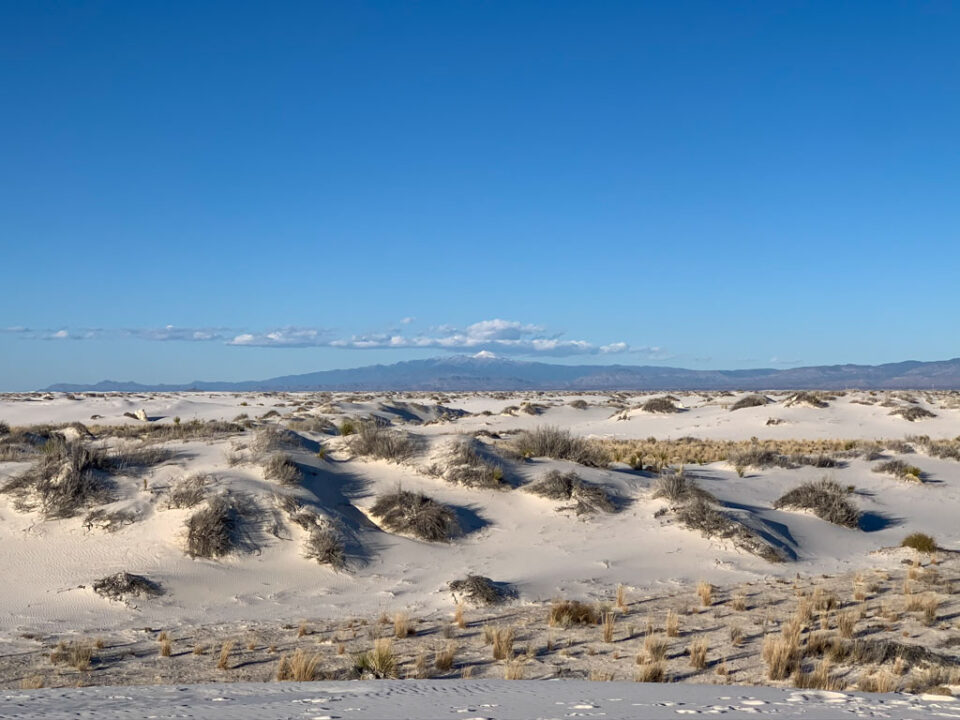
White Sands Winter Hike
The Alkali Flat Trail in the White Sands National Park in New Mexico is the perfect hike in winter. It is the longest and most challenging hike in the park, with a distance of around 5 miles. It takes about 2-3 hours to complete it. The trail is ideal for more experienced hikers. Good shoes are recommended.
Hiking in White Sands National Park in the winter is a great choice because the temperatures are agreeable and convenient for a longer hike. While in summer it can get blistering hot in the White Sands, the daily average temperatures in winter are around 55 Fahrenheit.
To enter the White Sands National Park you will need an entrance ticket. It can be bought in the Visitor’s Center at the entrance of the park. It also allows you to visit the attached museum and make use of the amenities there. Recommended by Sabrina, USAdventure
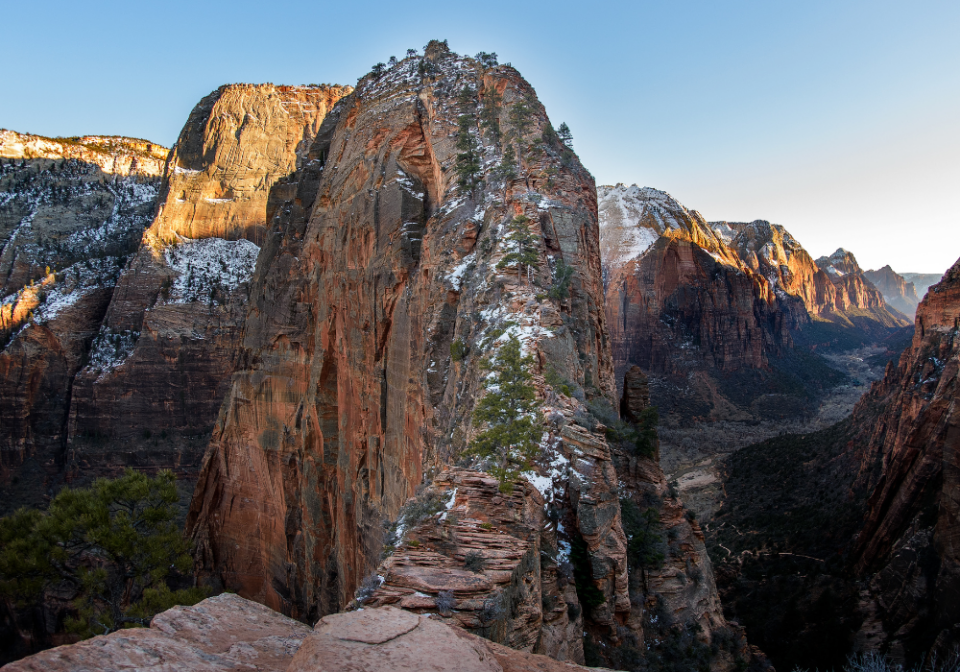
Zion Winter Hike
Situated within Utah’s Zion National Park, the Angel’s Landing Hike stands out as one of the most breathtaking winter hikes in the US. The hike is 5.4 miles round-trip and takes roughly 4 hours.
Though challenging and strenuous and often covered in snow and ice during the winter, climb offers mind-blowing 360-degree panoramas. Plus winter hiking in Zion National Park guarantees fewer crowds compared to the busy warmer seasons.
However, do take extreme care as the hike demands careful footing due to the steep drop-offs. Especially the last part of the hike is very difficult to navigate so hold onto the chains always.
You will need to obtain a permit to hike Angels Landing. If you can’t get a permit, you can hike to Scout Lookout, you just can’t access the Chains Section without a permit.
It’s a good idea to bring crampons to tackle any compacted snow and ice. If it’s snowing or icy, the Angel’s Landing winter hike isn’t recommended for beginner hikers – this is one of the most dangerous hikes in the US after all! Recommended by Catrina, 24 Hours Layover
CLICK TO SHOP FOR US NATIONAL PARK GUIDES & MAPS
Plan a US National Park Vacation
- National Parks by State
- US National Parks Pass
- US National Park Packing List
- US National Parks to Visit With Kids
- Best National Parks to Visit by Month
- 63 Fun Facts about US National Parks
US National Parks Packing List
Use our US National Park Packing List to make sure you have the right clothing and gear for visiting during the fall months! Grab your free printable packing checklist by clicking the image below!

